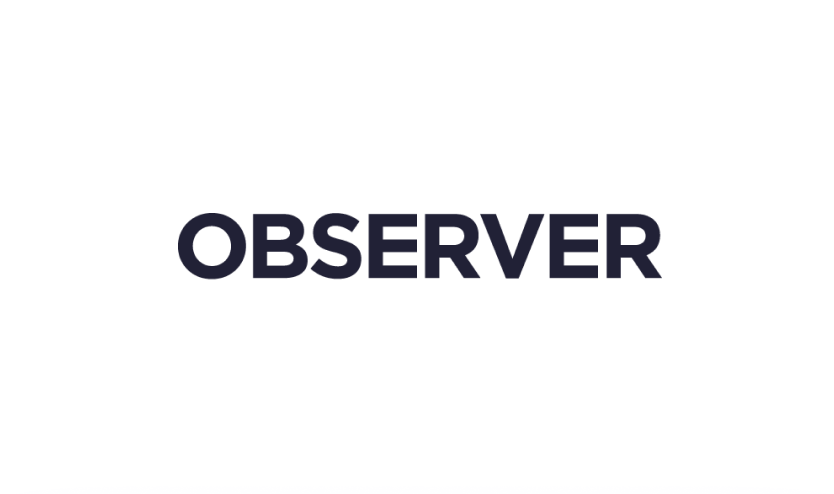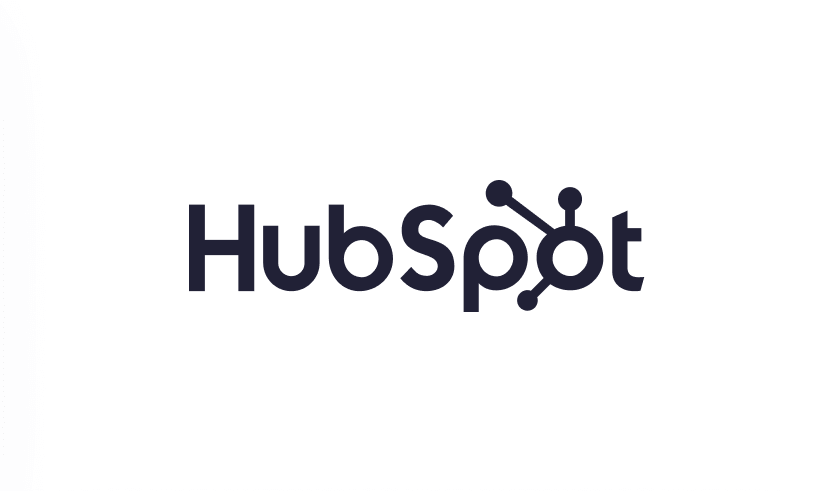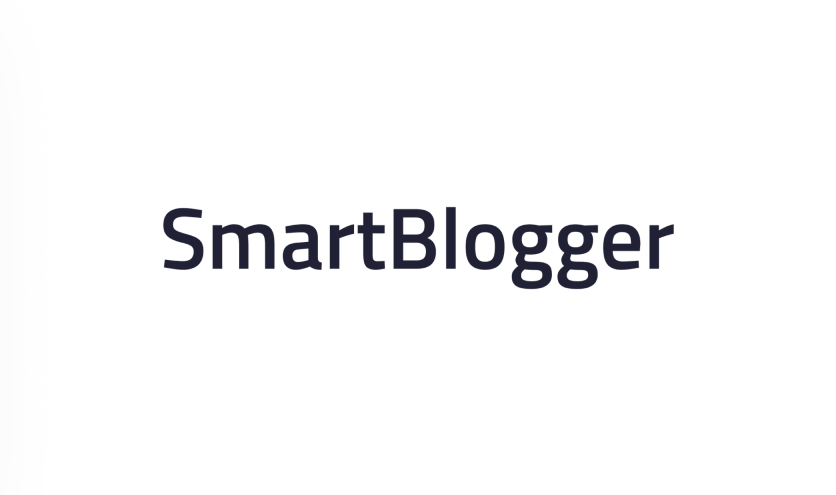Email Marketing Customer Journey: Your Complete Growth Guide
Why Email Remains Your Best Friend In Customer Relationships
Forget what you might have heard about email being outdated. Email marketing is still incredibly effective when it comes to building relationships with your customers. Think of it like this: email is that reliable friend who never forgets a birthday, checks in regularly, and always has something interesting to share. Unlike a quick social media post or an intrusive online ad, email gives you a dedicated space for real, one-on-one conversations. That's where true connection happens. This means ditching the mass-email blasts and getting more strategic.
The Power of the Inbox
Savvy businesses are focusing on creating thoughtful, journey-based email experiences. It's not about flooding inboxes, it's about crafting personalized and engaging interactions that truly speak to each customer.
Imagine getting a birthday email with a special discount just for you, or a helpful follow-up message with tips related to a product you just bought. These small, targeted touches show you care and strengthen the bond between your customer and your brand.
Email also allows for ongoing conversations and relationship building. By sharing valuable content, exclusive offers, and personalized recommendations, you can keep your audience engaged and stay top-of-mind. This builds loyalty and encourages repeat business. Plus, email gives you a direct line to get valuable feedback and really understand what your customers need and want.
Email's Reach and Engagement
Almost everyone uses email. It's become a vital part of the customer journey, with a huge number of people checking their inbox every single day. In fact, studies predict that by 2025, roughly 99% of consumers will be checking their email daily. That's a massive level of engagement. This constant interaction makes email the perfect way to connect with your audience throughout their journey with your brand. Discover more insights about email engagement statistics here. Being consistently present in their inbox keeps your brand relevant in their lives.
From Broadcast Tool to Relationship Builder
This approach changes email from a simple broadcasting tool into a powerful, strategic guide. By creating carefully planned email marketing customer journeys, you can lead potential customers through experiences that build trust, offer real value, and foster genuine connections at every interaction. Instead of generic messages, your emails become personalized conversations. This helps you better understand each customer's unique needs and preferences. In the end, effective email marketing builds lasting, profitable relationships. And these relationships drive business growth and long-term success.
The Five Stages That Actually Matter In Your Customer's World
Think of your email marketing customer journey like cultivating a garden. Each stage, from planting the seed to enjoying the fruits (or vegetables!) of your labor, requires different care and attention. We'll explore the five vital stages every customer goes through: Awareness, Consideration, Decision, Retention, and Advocacy.
From Stranger to Advocate: Understanding the Stages
Awareness is like planting a seed. This is the first time a customer encounters your brand. Maybe they see a social media post, a friend's recommendation, or an online ad. The goal here? Make a memorable first impression.
Consideration is when the seed begins to sprout. Your potential customer is actively exploring their options. They're comparing your brand to others, checking out reviews, and digging deeper into what you offer. Here, your emails need to provide valuable information and address their specific concerns.
The Decision stage is when the plant blossoms. They've chosen your brand! This isn't the end, however. It's the beginning of a fruitful relationship.
Retention is about nurturing the plant to ensure it thrives. This stage focuses on keeping customers happy and engaged. Personalized emails, special offers, and helpful content can turn one-time buyers into loyal fans.
Finally, Advocacy is when your plant bears fruit. Your delighted customers become your biggest champions, recommending your brand to others. They leave positive reviews and become enthusiastic brand ambassadors.
This infographic illustrates how understanding your audience through different segments—demographic, behavioral, and engagement—allows you to create a truly effective email marketing strategy that resonates with each unique group.
Respecting the Rhythm of the Journey
Just like you wouldn’t harvest a fruit before it’s ripe, you shouldn't rush the customer journey. Each stage requires a different approach and offers a unique opportunity. For example, initial awareness emails might focus on introducing your brand and highlighting key benefits. Retention emails, on the other hand, might offer exclusive discounts or personalized product recommendations. Check out these helpful tips on creating effective ecommerce email flows.
Why This Matters for Your Bottom Line
Nurturing customers through each stage of their journey builds stronger, more profitable relationships. These relationships are like investments that grow over time, leading to increased customer lifetime value and sustainable business growth.
To make this more concrete, let's look at an example. Imagine you own an online bookstore. By understanding the customer journey, you can send targeted emails based on individual reading preferences. This personalized approach not only leads to higher sales but also fosters customer loyalty, turning casual readers into lifelong patrons.
To further clarify the stages and their objectives, take a look at the table below:
Email Marketing Customer Journey Stages and Key Objectives
A comprehensive breakdown of each customer journey stage with specific email objectives, typical timeframes, and success indicators
This table summarizes the key objectives and metrics at each stage. By tracking these metrics, you can refine your strategy and ensure you're connecting with customers effectively at every point in their journey. This strategic approach elevates email from a simple communication channel into a powerful tool for growth.
Finding The Moments That Actually Change Minds
Let's face it, those picture-perfect customer journey maps we often see don't reflect reality. Real customer journeys aren't a straight line; they're more like a winding road with unexpected detours. This section explores how people really engage with brands through email, focusing on the key moments that influence their decisions.
The Welcome Wave and the Farewell Nod: Bookending the Experience
Think about the welcome email. It's the first impression, the digital equivalent of greeting someone at your door. A poorly written welcome email can send potential customers running. On the other hand, a warm and inviting welcome message can build a connection from the start and encourage them to explore further.
The post-purchase follow-up is just as important, yet often forgotten. This is your opportunity to turn a satisfied customer into a raving fan. A simple "thank you" is nice, but going further with personalized recommendations or exclusive content can solidify the relationship and boost repeat business. It's like a thoughtful farewell that leaves a positive memory.
Uncovering Hidden Friction: Where Good Intentions Go Wrong
Between the welcome and the thank you, there are many other touchpoints. Some may seem small, but they can have a big impact. For example, a confusing email layout can lead to frustration and abandoned carts. A poorly timed promotion can feel intrusive rather than helpful. These little friction points can create major roadblocks in the customer journey.
Smooth Transitions: The Art of Seamless Email Flows
Successful brands understand the importance of smooth transitions between touchpoints. They create email flows that feel natural and helpful, not pushy or salesy. Imagine receiving a series of emails after a purchase that gently guide you through product setup. Each message provides timely information, making the onboarding process a breeze. That's the power of a well-designed email journey.
From Friction to Flow: Optimizing Your Touchpoints
So, how do you find these crucial moments and make them work for you? Put yourself in your customer's shoes. Go through your own email flow and look for any friction points. Ask yourself these questions:
Is the language clear and easy to understand?
Is the call to action clear and enticing?
Does the email offer real value to the reader?
By carefully evaluating each touchpoint, you can find areas to improve and create a more engaging experience. Every interaction counts. Even small details can change how customers see your brand and ultimately decide whether to stay or go. This attention to detail is what sets the best brands apart.
Personalization Beyond The Basic Name Drop
Let's be honest, sticking someone's name at the top of an email isn't true personalization. It's more like a polite formality. Real personalization in email marketing is about treating each customer as an individual, understanding their unique needs and preferences. Think of it like a tailor crafting a custom suit – you wouldn't expect a one-size-fits-all approach, would you? In this section, we'll explore how leading brands are moving beyond simple demographics to achieve genuine, impactful personalization.
From Demographics to Deep Understanding
Knowing a customer's name and city is a starting point, sure. But impactful personalization requires digging deeper. It's about understanding their actual behavior: what they're browsing, what they've told you they like, and where they stand in their relationship with your brand. This means shifting from general demographics to more focused lists based on individual actions and preferences. This shift allows you to build email marketing customer journeys that truly connect with each customer.
Let me give you an example. Imagine two customers who both bought the same running shoes from your online store. One regularly browses your marathon training gear, while the other checks out articles about casual walking shoes. Sending them both the same generic email about new shoe arrivals just isn't effective. Instead, tailoring the message based on their unique browsing history creates a much more relevant and engaging experience.
Segmentation Strategies for Meaningful Connection
So, how do you reach this level of personalization? The key is meaningful segmentation. Rather than lumping customers into broad categories, you need to divide your audience based on their specific behaviors and preferences. This lets you send highly targeted emails that actually address their individual needs.
Here are a few powerful segmentation strategies:
Behavioral Segmentation: Group customers based on past actions, like products viewed, content downloaded, or emails clicked. This helps you send timely and relevant follow-up emails.
Lifecycle Stage Segmentation: Tailor your messages to where each customer is in their journey with your brand. A new subscriber needs a different approach than a loyal, repeat customer.
Preference-Based Segmentation: Let customers choose the types of emails they want to receive. This gives them control and guarantees they only receive content they're truly interested in.
Tools and Techniques for Advanced Personalization
The good news is that advanced personalization isn't just for massive corporations. Plenty of tools and techniques make it accessible for businesses of all sizes. Here are a few:
Behavioral Triggers: Automatically send emails based on specific actions, such as abandoning a shopping cart or looking at products in a certain category.
Predictive Analytics: Use data to predict what a customer might need and proactively offer relevant products or services. This demonstrates that you’re paying attention and understand their preferences.
Dynamic Content: Adjust the content of your emails based on individual customer data. This lets you craft a unique experience for every single recipient.
The Ethical Side of Personalization: Avoiding the Creep Factor
While personalization is a powerful tool, it's essential to avoid crossing the line into "creepy." Transparency and respect are crucial. Always be upfront about how you're using customer data and provide a clear way for them to opt out of personalized messages. This builds trust and makes sure your personalization efforts strengthen, not damage, customer relationships. For example, clearly explain why you’re recommending a specific product and offer a simple way to adjust their communication preferences.
By following these principles, you can harness the true power of personalization to build strong customer relationships and achieve real results in your email marketing customer journey. Learn more about effective email marketing automation for ecommerce here. This added level of personalization takes your email marketing from generic blasts to truly helpful, valuable conversations. Remember, the goal is to make the experience feel personalized and beneficial, not intrusive or overwhelming.
Automation That Feels Like A Helpful Friend
The best email automation doesn't feel robotic. It feels like a helpful friend anticipating your needs. Think about it – you appreciate a friend who offers useful advice, not one who bombards you with irrelevant information. That’s the same principle for your email marketing. It’s about providing genuine value while respecting your customers’ time and intelligence.
The Psychology of Helpful Automation
Effective email marketing journeys are built on understanding your customer. People respond well to content that feels personal, timely, and useful. It’s like a friend recommending a book they know you’ll love. That’s the connection you want to create with your automated emails. This means going beyond generic blasts and crafting targeted messages that resonate with individual needs.
For example, if someone abandons their online shopping cart, skip the generic "Come back!" email. Instead, offer a discount or free shipping. This small gesture shows you understand their hesitation and gives them a reason to return. You might be interested in: email marketing automation for ecommerce.
Building Smart, Adaptive Sequences
Traditional drip campaigns often follow a rigid structure, which can feel impersonal. Modern email automation should adapt to each customer’s behavior. Think of it as a "choose-your-own-adventure" story, where each action determines the next step.
This involves using behavioral triggers, such as website activity or past purchases, to send the right message at the right time. If a customer browses running shoes, send an email showcasing new arrivals or offering helpful reviews. This proactive approach anticipates their needs and provides a valuable service.
Avoiding Automation Pitfalls
Automation can backfire if not implemented carefully. Sending too many emails or irrelevant content can damage customer relationships and lead to unsubscribes. Nobody likes feeling spammed.
Focus on quality over quantity. Every email should have a clear purpose and offer real value – whether it's helpful tips, exclusive content, or personalized recommendations. Make sure each interaction strengthens, not weakens, your customer relationships.
Lifecycle Marketing and Smart Segmentation
Successful brands use lifecycle marketing to tailor messages to each customer’s stage in their relationship with the brand. A new subscriber, for example, has different needs than a loyal, repeat customer. This is where smart segmentation becomes essential.
By grouping your audience based on behavior, preferences, and lifecycle stage, you can send highly targeted emails. A new subscriber might receive a welcome series, while a repeat customer gets personalized product recommendations. This tailored approach strengthens connections and makes your automated workflows more effective. It’s about creating a journey that feels personal, providing real value at every stage. This turns automation into a powerful engine for loyalty and business growth.
Metrics That Actually Predict Long-Term Success
Let's be honest, vanity metrics can be tempting. Open rates and click-through rates offer a quick peek, but they don’t always reveal the full impact of your email marketing efforts. It's a bit like judging a book by its cover – eye-catching, maybe, but you need to read the story to understand its true value. This section explores how to use metrics to tell the complete story of your email marketing customer journey.
Open and click-through rates do offer a glimpse into customer behavior. Industry averages show email open rates hovering around 39.64%, while click-through rates sit closer to 3.25%. This tells us that while a decent number of people open emails, a smaller percentage actually click through. For more insights, check out these email marketing statistics.
This difference emphasizes the importance of digging deeper. We need to look beyond surface-level numbers to understand what's really happening.
Beyond Opens and Clicks: Measuring Real Engagement
Focusing only on opens and clicks is like judging a party's success solely by the number of attendees. It doesn't tell you if anyone actually had fun or made any meaningful connections.
Similarly, in email marketing, real engagement means more than just opening an email or clicking a link. It's about measuring actions that show true interest and foster lasting customer relationships.
Think about metrics like purchase rate, customer lifetime value (CLTV), and customer churn rate. These metrics show how effective your emails are at driving sales, building loyalty, and keeping customers coming back. They paint a much more accurate picture of your email marketing's impact on your business's bottom line. For a helpful comparison, take a look at these email marketing benchmarks.
Using Data to Optimize the Customer Experience
Data isn't just for pretty reports. It's a powerful tool for continuously improving your email strategy. By analyzing metrics at different stages of the customer journey, you can pinpoint areas ripe for optimization. Think of it like tending a garden – you monitor growth, sunlight, and water levels, adjusting your approach to help each plant flourish.
For example, a high drop-off rate at the consideration stage might suggest you need to experiment with different types of content or offers to re-engage those potential customers. A high churn rate could indicate a need for improved post-purchase communication or a more robust loyalty program. This constant tweaking and refining is the key to creating a seamless and enjoyable customer journey.
Spotting the Warning Signs Before They Become Problems
Just like doctors use vital signs to assess a patient's health, you can use metrics to spot potential problems in your customer relationships. A sudden drop in engagement or a spike in unsubscribe rates could signal growing customer dissatisfaction. Addressing these issues proactively can prevent them from escalating and causing significant customer churn. Think of this as preventative medicine for your email marketing strategy.
The following table provides a more detailed breakdown of key email metrics across the customer journey:
Key Email Marketing Metrics by Customer Journey Stage
Essential metrics to track at each stage of the customer journey with industry benchmarks and optimization strategies
This table provides valuable benchmarks and optimization strategies for each stage. By regularly monitoring these metrics and understanding their significance within the context of your email marketing customer journey, you're better equipped to build stronger customer relationships and achieve sustainable growth. This approach shifts your focus from chasing arbitrary numbers to nurturing genuine customer connections that drive real business success.
Real Success Stories And What You Can Learn From Them
Theory is important, but real-world examples are even better. Let's look at some businesses that have nailed their email marketing customer journey and achieved impressive results. These stories show how powerful a well-planned email strategy can be.
From Startup to Scale-Up: How a Small Business Used Email to Grow
Imagine a small e-commerce business selling handcrafted jewelry. They started small – a tiny email list and limited resources. But by focusing on the customer journey through email, they saw a 300% increase in customer lifetime value in just two years. Their secret? Personalized welcome emails, segmenting their audience based on past purchases, and sending targeted product recommendations. This personal touch built loyalty and encouraged repeat business. Post-purchase emails also gathered feedback and offered exclusive discounts, further strengthening those customer relationships.
Shortening the Sales Cycle: A B2B Success Story
Now think about a B2B software company struggling with a long, complex sales cycle. They used targeted email sequences to significantly shorten that sales cycle and increase conversions. They did this by creating automated emails that explained the software's benefits, addressed common concerns, and provided helpful resources. Each email nudged prospects closer to purchasing, delivering relevant information at every point.
The Power of Visual Journeys: Mailchimp's Customer Journey Builder
Mailchimp, a popular email marketing platform, offers a tool called the Customer Journey Builder. This lets businesses visually map and automate their email journeys. The image below shows an example.
See how Mailchimp lets you visualize different customer actions and trigger specific emails based on those actions? This automation and personalization creates dynamic email experiences that respond to individual customer behavior. It's far more effective than just sending out mass emails.
Adapting Success to Your Business
These stories show that strategic email marketing can bring great results across various industries and business sizes. While these companies saw significant growth, their tactics may not be a perfect fit for everyone. Adapting these strategies to your specific needs and resources is important. A small business with limited resources might prioritize a strong welcome series and personalized transactional emails. A larger company might invest in more advanced automation and segmentation. The core principles remain the same: building strong relationships, providing value at every touchpoint, and constantly improving based on data and feedback.
Turning Insights into Action
The biggest takeaway? Success in email marketing is about understanding your customers and making real connections. It's not about generic blasts; it's about creating personalized experiences that resonate with individual needs. By learning from others, you can avoid common mistakes and build a strategy that delivers real results.
Want to transform your email marketing and see similar success? Check out the resources and expert advice available at Chase Dimond to take your strategy to the next level. Let's build something great together.





























